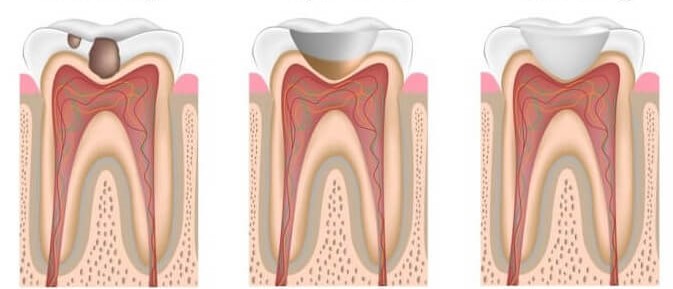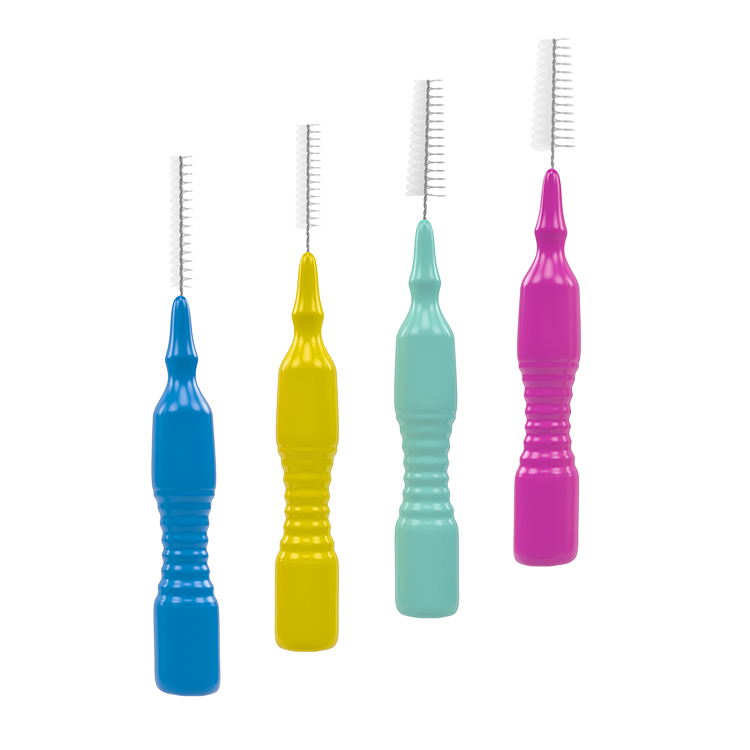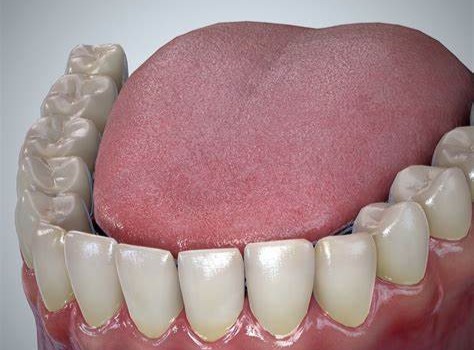What is a Tooth filling?
Tooth restoration or tooth filling is the process of repairing a damaged or decayed tooth by filling in the cavity with a filling material such as dental amalgam, composite resin, porcelain, or gold. The filling material replaces the decayed or damaged tooth structure, restores tooth function, and prevents further decay or damage. Tooth restoration or tooth filling can be done in one dental appointment and is a common and simple dental procedure.
Related Article:- Dental Filling Material Or Dental Restorations: An Ultimate Guide To Selection (With Cost)
Types Of Dental Fillings
There are several types of dental fillings that are commonly used depending on the patient’s preferences or needs:
1. Amalgam fillings – These are silver fillings that are composed of a mixture of metals (silver, tin, copper, and mercury). They are commonly used to fill large cavities and can last up to 15 years or longer.
2. Composite fillings – Composite fillings are tooth-colored and are made of a mixture of plastic and glass. They are a popular choice for visible front teeth or when aesthetics are a concern and can last up to 10 years.
3. Gold fillings – Gold fillings are durable and long-lasting. They are commonly used for the back teeth and can last more than 15 years.
4. Ceramic fillings – Ceramic fillings are tooth-colored and can be made of porcelain or a mixture of materials, making them an ideal choice when aesthetics and durability are important.
5. Glass Ionomers – Glass ionomer fillings are made of a mixture of acrylic and glass and are mainly used for baby teeth, small fillings, and non-biting surfaces.
6. Compomers – Compomer fillings are a combination of glass ionomers and composite resins, and are commonly used for small to medium-sized cavities in the back teeth.
The type of filling recommended will depend on various factors such as the location of the tooth, the extent of decay or damage, the size of the cavity, and the patient’s preferences.
Related Article:- Dental Filling Material Or Dental Restorations: An Ultimate Guide To Selection (With Cost)
Procedure Of Dental Filling
The procedure for dental filling typically involves the following steps:

1. Numbing the area – The dentist will administer a local anesthetic to numb the affected tooth and the surrounding area.
2. Removing decay – The dentist will use a drill or other instrument to remove the decayed part of the tooth.
3. Cleaning the cavity – The dentist will then clean the cavity thoroughly to remove any bacteria or debris.
4. Filling the cavity – The dentist will fill the cavity with the chosen filling material, such as amalgam, composite, or porcelain.
5. Polishing the filling – The dentist will polish the filling to remove any rough edges and ensure that it fits comfortably with the opposing teeth.
6. Checking your bite – The dentist will check your bite to ensure that the filling is not interfering with your natural bite.
7. Finishing – The dentist will provide post-treatment instructions and schedule any necessary follow-up appointments.
The procedure for dental filling usually takes about 30 minutes to an hour, depending on the size of the cavity and the type of filling material used. In some cases, multiple appointments may be required to complete the procedure, depending on the severity of the decay.
How To Check The Filling?
Checking the bite is an important part of the dental filling process. If the filling is too high or too low, it can create discomfort or pain when chewing and biting, and may cause other oral health issues.
Here are some steps on how to check if a filling is high or low:
1. Bite down slowly – Bite down on the filling slowly to evaluate if there is any pressure or discomfort.
2. Check for sensitivity – Sensitive spots or sharp pain can indicate that the filling is high.
3. Perform a visual inspection – The dentist will examine the tooth and filling visually to look for any obvious signs of unevenness or high points.
4. Use bite paper – The dentist may use a special type of paper called articulating paper to evaluate the bite and confirm if the filling is high or low.
5. Make adjustments – If the filling is high, the dentist will need to make adjustments to the filling to ensure proper occlusion. This process involves removing small portions of the filling until it fits perfectly with the opposing teeth.
It is important to have regular dental check-ups to ensure that fillings are checked regularly, and any issues are identified and treated promptly.
Ill Effects Of High Dental Filling
High dental restoration can cause several ill effects, including:
1. Pain and discomfort – A high restoration can cause pain and discomfort while eating or drinking.
2. Bite Problems – A high restoration can cause changes in the patient’s bite, which can eventually lead to a severe bite problem.
3. Tooth Sensitivity – The tooth can become extremely sensitive to hot and cold temperatures, making it difficult to perform regular activities like drinking hot coffee or eating hot food.
4. Uneven Wear – Uneven contact between the teeth can cause the filling to wear down prematurely.
5. Occlusal Trauma – A high filling can cause trauma to the teeth or the surrounding gums, leading to more complicated dental issues.
6. Jaw Pain – Chronic pain in the jaw can be a sign of a high filling that is putting too much pressure on the jaw joint.
If a patient experiences any of these ill effects after receiving dental restoration, it is important to contact a dentist as soon as possible. A dentist can evaluate the patient’s bite and make necessary corrections to ensure comfortable and proper dental function.
Ill Effects Of Low Dental Filling
A low dental restoration can also cause several ill-effects that can affect a patient’s oral health in different ways, such as:
1. Sensitivity: A low restoration can be sensitive to pressure or contact, and can cause sensitivity to hot or cold temperatures.
2. Bite Problems: A low restoration can also cause bite problems, which puts undue stress on teeth and gums, leading to headaches and jaw pain.
3. Tooth Movement: A low restoration puts additional pressure on the teeth that can cause the tooth to shift from its original position.
4. Uneven Wear: A low restoration can cause the filling to wear down more quickly than a properly placed restoration.
5. Cracked Filling: A low restoration can cause a filling to crack or become loose, allowing bacteria to enter inside the tooth and causing further decay.
6. Gum Irritation: A low restoration can also cause irritation and inflammation of the gums, leading to gum disease.
If a patient experiences any discomfort or pain after receiving a low restoration, it is essential to contact a dentist immediately. The dentist can evaluate the restoration and make necessary corrections to ensure the comfort and proper function of the teeth.
How To Check If Filling Is Dislodged
If you suspect that a filling is dislodged, there are some common signs and symptoms to look for:
1. Sensitivity: One of the first symptoms of a dislodged filling is sensitivity in your tooth. This sensitivity may occur when you eat or drink hot or cold foods.
2. Pain: Pain while chewing or biting on the tooth may indicate that the filling is dislodged.
3. Rough edges: A dislodged filling may have rough or jagged edges, which can irritate your tongue and gums.
4. Hollowed-out or missing filling: If a portion of your filling is missing, or you see a hole in your tooth, it is likely that the filling has been dislodged.
5. Visual Inspection: One of the best ways to check if a filling is dislodged is through visual inspection. Using a mirror, you can look at your tooth and see if a part of the filling is missing or any part of the filling is not present in the tooth.
It is crucial to contact your dentist as soon as you realize that a filling is dislodged. A dislodged filling can cause additional damage to your tooth and may lead to infection. Your dentist will evaluate the extent of the damage and recommend the best course of action, which may include repairing or replacing the filling.
Do’s: What To Do After Getting Tooth Filling?
1. Follow proper oral hygiene: After your tooth filling, it is important to maintain good oral hygiene. Brush your teeth twice a day and floss at least once a day. Use a fluoride mouthwash to prevent plaque buildup and protect your teeth against cavities.
2. Watch what you eat: After the tooth filling procedure, you should avoid sticky and hard foods that can damage the filling. Try to eat soft foods like mashed potatoes, yogurt, and soup. Avoid consuming sugary and acidic foods that can erode the filling.
3. Rest for 24 hours: It is recommended that you rest for at least 24 hours after the procedure. Avoid strenuous activities that can cause discomfort or pain. You may also experience some sensitivity and pain in the affected tooth after the filling, so it’s best to avoid activities that can increase your discomfort.
4. Take prescribed medications: Your dentist may prescribe pain medications or antibiotics after the procedure to help with the post-operative pain. Take the medicines as prescribed by your dentist and only take over-the-counter medicines if recommended.
Don’ts: What Not To Do After Tooth Filling?
1. Don’t eat or drink anything until the anesthetic has worn off: After the tooth filling procedure, you may experience some numbness in your mouth due to the anesthetic. Avoid eating or drinking anything until the numbness has worn off completely, as you may accidentally bite your tongue or cheek.
2. Avoid hot and cold beverages: After the filling procedure, you may experience sensitivity to hot and cold beverages. To prevent discomfort, avoid consuming hot or cold beverages until the sensitivity subsides.
3. Avoid vigorous brushing and flossing: Avoid aggressive brushing and flossing as they may damage the filling. Use a soft-bristled toothbrush and be gentle while brushing the affected tooth.
4. Don’t delay future dental appointments: Regular dental checkups are important to detect any problems early on and prevent the need for more extensive treatments. Schedule future dental appointments regularly and maintain good oral health.
In conclusion, following these dos and don’ts will help you recover faster post-tooth filling and help in better maintenance of oral health and dental hygiene.
Related Article:- Dental Filling Material Or Dental Restorations: An Ultimate Guide To Selection (With Cost)
Final word
Maintaining good oral health is essential after getting a tooth filling. Be sure to follow the after-care instructions given by your dentist, avoid damaging or irritating the filled tooth, practice good oral hygiene, attend follow-up appointments, and report any issues to your dentist promptly. These steps are essential to promote healing, prevent infection, and ensure that your filling lasts for a long time.




One thought on “What Are The Do’s And Don’ts After Tooth Filling?”